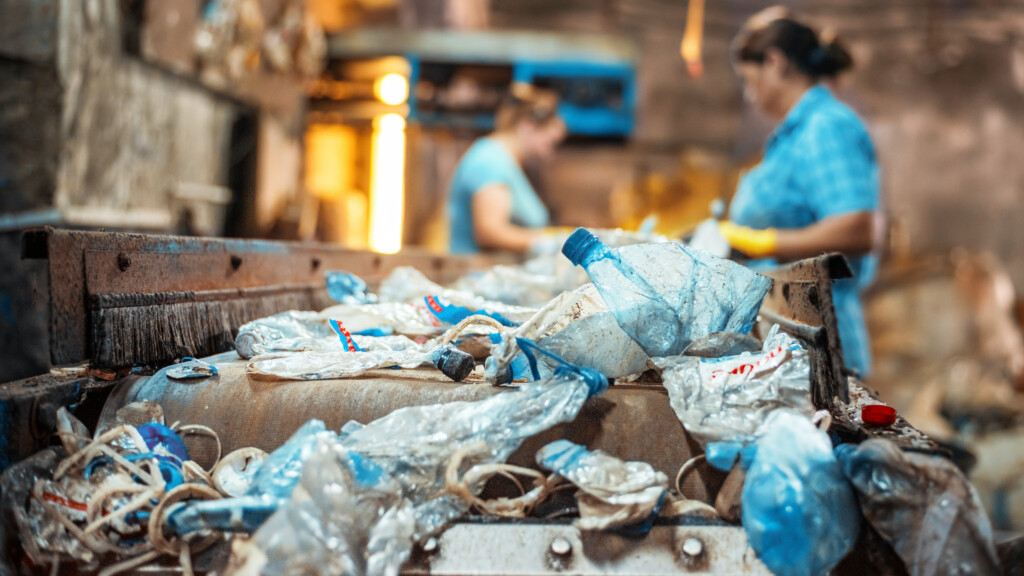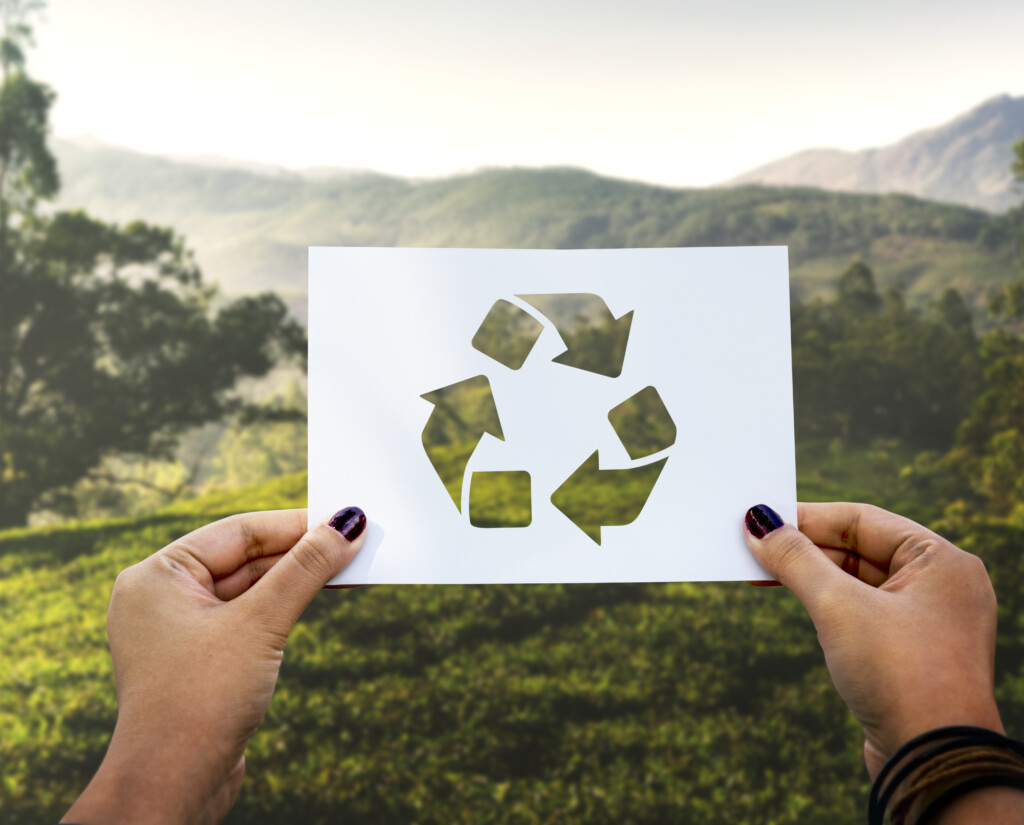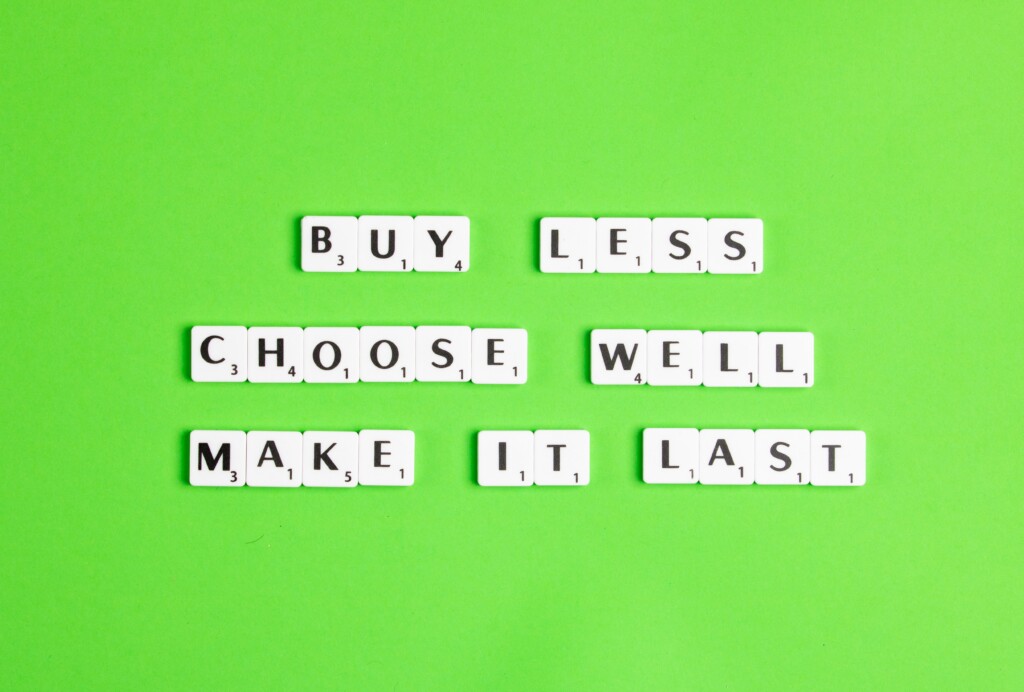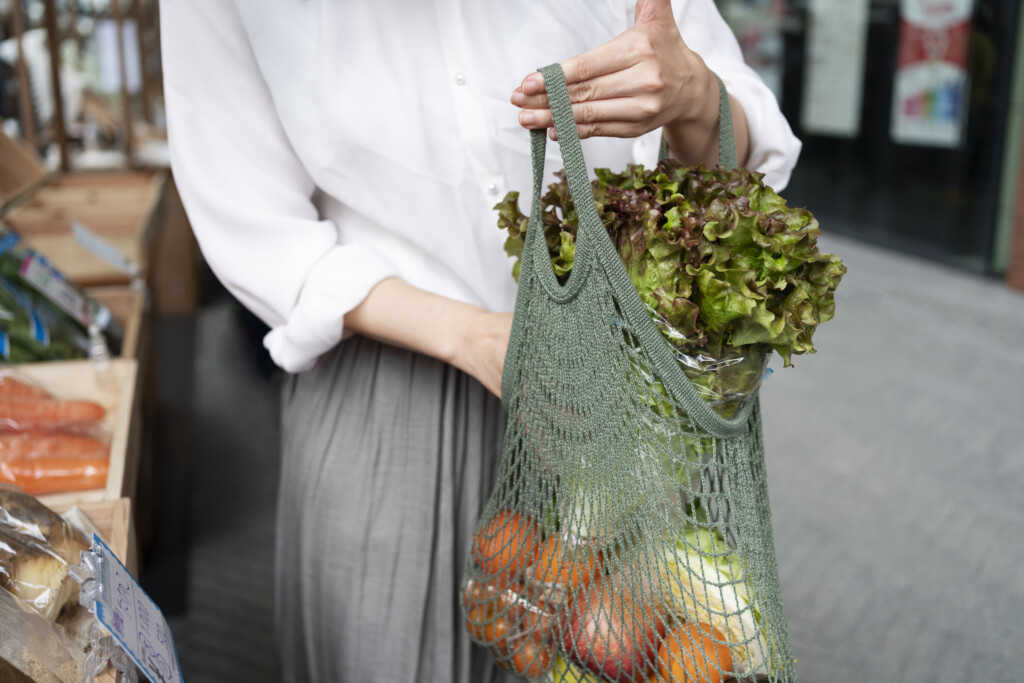Sustainable consumerism represents a conscientious approach to buying goods and services, one that prioritizes environmental protection, social responsibility, and economic viability. At its core, it’s about making purchasing decisions that are not only beneficial or neutral to the environment but also socially equitable and economically feasible. This concept transcends the mere act of buying green products; it involves understanding the full lifecycle of products—from their creation to their disposal—and choosing those that minimize negative impacts on our planet and society.
Shopping responsibly is vital in today’s world, where consumer choices directly influence global markets and ecosystems. Every purchase acts as a vote for the kind of world consumers want to live in. By choosing sustainable products and services, individuals contribute to the demand for environmentally friendly and ethically produced goods, encouraging manufacturers and businesses to adopt more sustainable practices. This shift is crucial in addressing pressing environmental issues such as climate change, resource depletion, and pollution.
Moreover, sustainable consumerism is about breaking the cycle of ‘buy-use-dispose’ that dominates contemporary consumption patterns. It promotes a more circular economy, where products are designed to be reused, repaired, or recycled, thereby reducing waste and conserving resources. As consumers become more aware of their ecological footprint, the importance of shopping responsibly becomes not just a personal preference but a necessary step towards ensuring a livable planet for future generations. This transition to mindful consumption is pivotal in creating a sustainable future, making the role of each consumer more crucial than ever.

Consumerism, in its unchecked form, has far-reaching environmental impacts, primarily driven by overconsumption. The relentless demand for goods leads to excessive resource extraction, energy consumption, and waste generation, significantly harming the planet’s ecosystems. Overconsumption not only depletes natural resources at unsustainable rates but also results in habitat destruction, loss of biodiversity, and pollution of air, water, and soil. The production processes, often reliant on fossil fuels, contribute to greenhouse gas emissions, exacerbating climate change. Moreover, the disposal of products, particularly non-biodegradable and toxic materials, poses a long-term threat to environmental health and safety.
The carbon footprint of goods and services is a critical aspect of this impact. Every item purchased has a history of carbon emissions associated with its life cycle – from raw material extraction, manufacturing, transportation, to its use and eventual disposal. For instance, the production of a single cotton T-shirt can consume thousands of liters of water and emit significant amounts of greenhouse gases. Similarly, electronic goods involve energy-intensive manufacturing and often contain hazardous materials, complicating their disposal and recycling.
Understanding these impacts is crucial for consumers. It empowers them to make informed decisions, favoring products with lower environmental footprints. Reducing consumption, opting for sustainable alternatives, and supporting circular economy models are ways individuals can mitigate these negative impacts. By recognizing the true environmental cost of their consumption choices, consumers can play a pivotal role in steering the global economy towards more sustainable practices, thereby reducing the overall environmental burden of consumerism.

The principles of sustainable consumerism are grounded in the concepts of “Reduce, Reuse, Recycle,” the lifecycle approach, and the circular economy, each playing a crucial role in minimizing environmental impact.
Reduce, Reuse, Recycle – Explained: This well-known mantra serves as the foundation of sustainable consumerism. ‘Reduce’ emphasizes the need to cut down on consumption and waste. This can mean buying fewer products, choosing items with less packaging, or selecting goods that are more durable and long-lasting. ‘Reuse’ involves finding new ways to use products instead of discarding them. This can include repurposing items or buying second-hand products. ‘Recycle’ entails processing used materials into new products, thereby conserving resources and reducing the need for virgin raw materials. Each step helps in diminishing the ecological footprint of our consumption habits.
The Lifecycle Approach to Product Consumption: This approach considers the entire lifecycle of a product – from resource extraction, manufacturing, and distribution, to its use and final disposal. By understanding this cycle, consumers can make more informed choices, preferring products that are designed for a longer life, are energy-efficient, have minimal negative impacts during production, and can be easily recycled or disposed of responsibly.
The Concept of a Circular Economy: Moving away from the traditional linear ‘take-make-dispose’ model, the circular economy aims to design out waste and pollution, keep products and materials in use, and regenerate natural systems. It emphasizes the creation of closed-loop systems where resources are reused, repaired, refurbished, and recycled for as long as possible. This transformative approach not only reduces waste and conserves resources but also encourages innovation in product design and service models, aligning economic activities with environmental sustainability.
Embracing these principles, consumers can significantly contribute to a more sustainable world, reducing the environmental impacts of their consumption and fostering an economy that thrives in harmony with the planet.

Adopting strategies for responsible shopping is integral to sustainable consumerism. These strategies help individuals make choices that are better for the environment, society, and their well-being.
Choosing local products reduces the carbon footprint associated with long-distance transportation. It also supports local economies and often results in fresher, more traceable goods. Organic products, particularly in food and clothing, eliminate the environmental damage caused by harmful pesticides and chemicals. These products often have a lesser ecological impact and are healthier for consumers and the environment. Eco-friendly products, designed with sustainability in mind, use less energy, fewer resources, and minimize pollution during their production, use, and disposal. Opting for these products can significantly reduce one’s environmental impact.
Minimalism, as a lifestyle choice, involves buying and using only what is necessary. It’s about prioritizing quality over quantity and valuing experiences over material possessions. This approach not only declutters life but also significantly reduces waste and consumption. By focusing on what is truly essential, minimalism helps in making more thoughtful and sustainable purchasing decisions, thus reducing the overall consumer footprint.
Eco-labels and certifications are tools to help consumers identify products that meet certain environmental and social standards. However, the multitude of labels can be overwhelming. To navigate them effectively, consumers should familiarize themselves with the most reputable and relevant certifications in their region or for the product type they are interested in. For instance, labels like Energy Star for electronics, USDA Organic for food, and Fair Trade for a range of products from coffee to clothing, indicate that these products have met specific standards. Understanding what these labels represent can guide consumers in making more informed and responsible choices.
Incorporating these strategies into daily shopping routines can substantially contribute to more sustainable consumption patterns. They empower consumers to make choices that align with environmental sustainability, social responsibility, and personal well-being.

Consumer demand wields considerable influence over production practices and market trends. This influence is a cornerstone in the shift towards more sustainable business practices.
Consumer Influence on Production Practices: Consumers are not just passive recipients of goods and services; their choices and demands shape production practices. When a significant number of consumers start prioritizing sustainable products, businesses take notice. This shift in demand can lead to a greater focus on environmentally friendly production methods, such as using renewable energy, reducing waste, and sourcing materials sustainably. Companies may also invest more in research and development to create products that are both eco-friendly and appealing to the environmentally conscious consumer. This shift isn’t just limited to niche markets; major corporations across various industries have begun to incorporate sustainability into their core business strategies in response to growing consumer awareness and demand.
Supporting Businesses with Sustainable Practices: By consciously choosing to support businesses that adopt sustainable practices, consumers play a vital role in promoting environmental stewardship in the corporate world. This support can take various forms, such as purchasing products from companies that are known for their green initiatives, or choosing services from businesses that have a strong commitment to social and environmental responsibility. Consumer support for these businesses not only helps them financially but also sends a clear message to the market about the growing demand for sustainability. As these businesses thrive, they set benchmarks in their industries, encouraging even their competitors to adopt similar practices.
The power of consumer demand, therefore, is a potent tool in shaping a more sustainable future. Through informed and conscious choices, consumers can drive a significant transformation in how businesses operate, steering them towards practices that are beneficial for the environment and society at large.

Effective waste reduction is a critical aspect of sustainable consumerism, encompassing everything from the planning of purchases to the disposal of products. It involves a proactive approach to consumption that minimizes waste generation and ensures the responsible handling of waste that is produced.
Planning Purchases to Avoid Excess: Thoughtful planning before making purchases is essential to avoid unnecessary consumption and waste. This involves assessing needs versus wants, avoiding impulse buys, and purchasing items that are truly necessary. Planning also means buying in quantities that can be realistically used, especially for perishable goods, to prevent waste. For non-perishable items, it’s about considering long-term needs and opting for products that are durable and versatile.
Understanding Packaging and Product Lifespan: Packaging plays a significant role in waste generation. Consumers can reduce waste by choosing products with minimal or recyclable packaging. Buying in bulk, where appropriate, can also reduce packaging waste. Additionally, understanding a product’s lifespan helps in making better purchasing decisions. Opting for products designed for longevity and repairability over disposable or short-lived items can significantly reduce the amount of waste generated over time.
Proper Disposal and Recycling Techniques: Even with the best efforts to reduce and reuse, some waste is inevitable. Proper disposal and recycling are vital in managing this waste responsibly. This includes separating recyclables from non-recyclables, disposing of hazardous waste like electronics and batteries at designated facilities, and composting organic waste when possible. Staying informed about local recycling guidelines and facilities is crucial as recycling practices and capabilities vary by location. Additionally, consumers can look into programs for returning or recycling products at the end of their lifecycle, which is increasingly offered by companies as part of their sustainability efforts.
By incorporating these practices into their daily lives, consumers can significantly reduce their waste footprint. From mindful purchasing to responsible disposal, each step in this process plays a crucial role in minimizing waste and its impact on the environment.

In the digital age, online shopping has become a convenient option for many, but it also brings an environmental impact that is often overlooked. The digital footprint of online shopping encompasses various aspects, from data storage to delivery logistics.
Digital consumption primarily involves the energy used to power and cool servers for websites, cloud storage, and data centers. The carbon footprint of digital infrastructure is significant, as these facilities often rely on fossil fuels. For instance, it’s estimated that data centers could consume up to 8% of global electricity by 2030. Additionally, the packaging and transportation of goods ordered online contribute to carbon emissions. Quick shipping options, like overnight delivery, can exacerbate this, as they often mean less efficient transportation modes are used.
💻 Mindful Online Shopping: Consider the necessity of the item and potential alternatives available locally. Accumulating orders for fewer deliveries can reduce transportation emissions.
🚲 Choose Eco-Friendly Delivery Options: Opt for standard delivery instead of expedited shipping to allow for more carbon-efficient transportation. Some retailers also offer a “green shipping” option that focuses on reducing environmental impact.
☁️ Digital Product Management: Be aware of your data usage and storage. Regularly clean up digital storage to avoid unnecessary data accumulation, which in turn demands energy for storage and maintenance.
♻️ Recycling and Disposing of Electronics: Properly recycle old electronics to prevent hazardous materials from harming the environment and to recover valuable materials.
🗣️ Supporting Sustainable Online Retailers: Patronize online businesses that demonstrate a commitment to sustainability, such as using renewable energy for their operations, minimal and recyclable packaging, or carbon offsetting initiatives.
While online shopping offers convenience, it’s important for consumers to be aware of and mitigate its environmental impact. By making conscious choices and supporting environmentally responsible practices, consumers can help reduce the digital footprint associated with their online shopping habits.

Implementing sustainable consumerism in everyday life involves making conscious choices in various aspects, including clothing and fashion, food and groceries, and electronics and technology.
🎍 Opt for Sustainable Brands: Choose brands that prioritize sustainable practices, like using organic or recycled materials and ethical labor practices. For example, Patagonia is renowned for its commitment to sustainability, using recycled materials and offering a repair service for its garments.
🧥 Buy Second-hand or Vintage: Purchasing second-hand clothing from thrift stores or platforms like Depop or ThredUp not only saves clothes from landfills but also reduces the demand for new production.
🔎 Quality Over Quantity: Invest in high-quality items that last longer, reducing the need for frequent replacements.
🥦 Buy Local and Organic: Purchasing from local farmers’ markets or choosing organic products at the store can reduce the environmental impact associated with long-distance food transportation and harmful agricultural chemicals.
🥩 Reduce Meat Consumption: Adopting a plant-based diet or reducing meat intake can significantly lower your carbon footprint. The production of plant-based foods generally requires less water and land and emits fewer greenhouse gases compared to animal farming.
🗑️ Minimize Food Waste: Plan meals and buy only what you need. Composting organic waste is another effective way to recycle nutrients back into the ecosystem.
⚡ Choose Energy-Efficient Devices: Look for electronics with energy-saving features or certifications like ENERGY STAR.
🪫 Proper Disposal and Recycling: Dispose of old electronics at designated e-waste recycling centers. Companies like Apple and Samsung offer take-back programs for their products.
🖥️ Buy Refurbished: Consider buying refurbished electronics, which are often as good as new but with a lower environmental impact.
In each of these areas, the key is to make more informed and conscious choices, prioritizing sustainability and environmental responsibility in daily consumer behavior. By doing so, individuals can significantly contribute to reducing their ecological footprint and promoting a more sustainable future.

Various tools and resources are available to assist consumers in making sustainable shopping choices. These range from apps and websites that guide eco-friendly purchases to community resources that support sustainable living.
Each of these tools and resources plays a vital role in promoting sustainable consumer habits, offering practical solutions and alternatives to conventional consumption patterns. They empower individuals to make choices that are better for the environment and their communities.

Overcoming challenges to sustainable consumerism is crucial for its broader adoption. One of the primary hurdles is the perceived higher costs of sustainable products. While it’s true that eco-friendly or ethically made products can carry a higher price tag due to more expensive sustainable materials and fair labor practices, this is often offset by their longer lifespan and the reduced environmental cost. Consumers can approach this challenge by focusing on the long-term value rather than just the upfront costs. Investing in quality over quantity not only ensures durability but can also be cost-effective in the long run.
Another significant barrier is the accessibility and availability of sustainable products. In many regions, these products may not be as readily available, or there may be a limited range of options. To address this, consumers can start by supporting local businesses and farmers, which often follow more sustainable practices. Additionally, the rise of online shopping platforms dedicated to eco-friendly products has made it easier to find sustainable options.
Making the transition from conventional to sustainable consumer habits can be daunting. It involves a shift in mindset and lifestyle. Starting small can make this transition more manageable – simple steps like reducing waste, opting for products with less packaging, or choosing energy-efficient appliances can gradually lead to more significant changes. Education plays a key role here, as informed decisions are the backbone of sustainable consumerism. Resources like blogs, documentaries, and community groups can provide valuable insights and support in adopting a more sustainable lifestyle.
Ultimately, the journey to sustainable consumerism is about balance, making informed choices that are feasible and realistic, considering personal circumstances and the environment.

In conclusion, sustainable consumerism is not just a trend but a crucial shift necessary for the well-being of our planet and future generations. It represents a conscious choice to reduce environmental impact, support fair labor practices, and contribute to a more equitable and sustainable world. By choosing products that are environmentally friendly, ethically produced, and economically viable, consumers play a pivotal role in shaping market demands and influencing production practices.
The journey towards sustainable consumerism is incremental and requires a balance of informed decisions and practicality. It begins with understanding the impact of our consumption habits, from the food we eat to the clothes we wear, and the electronics we use. By embracing principles like reducing waste, reusing resources, and recycling, and by supporting businesses that prioritize sustainability, each individual can contribute to a larger positive impact.
Taking the first steps towards responsible shopping might seem challenging, but it’s a journey worth embarking on. Every small change counts, whether it’s choosing a product with less packaging, buying locally, or learning to repair rather than replace. As more people join this movement, the collective impact grows, paving the way for a healthier planet and a more sustainable future. So, take that first step, no matter how small, and be part of the change towards a more sustainable world.
Stay a while and read more posts like this
Let’s devote a few minutes to envision our world in 2100. It’s quite a thought experiment, given the dramatic transformations our planet has experienced in...
With climate change looming large, the world is embarking on a quest for solutions to heal our ailing planet. Solar geoengineering emerges as a burgeoning field,...
Taking on parenthood comes with unique choices that factor in more than just our family’s immediate needs. For modern parents, who are not just guardians of...